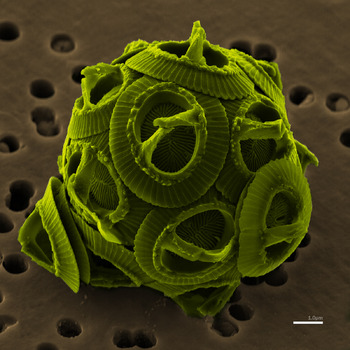 Further to the last post, and with truly magnificent timing, I come across a new paper from John Hopkins University:
Further to the last post, and with truly magnificent timing, I come across a new paper from John Hopkins University:
As anthropogenic CO2 emissions acidify the oceans, calcifiers generally are expected to be negatively affected. However, using data from the Continuous Plankton Recorder, we show that coccolithophore occurrence in the North Atlantic increased from ~2 to over 20% from 1965 through 2010. We used Random Forest models to examine >20 possible environmental drivers of this change, finding that CO2 and the Atlantic Multidecadal Oscillation were the best predictors, leading us to hypothesize that higher CO2 levels might be encouraging growth. A compilation of 41 independent laboratory studies supports our hypothesis. Our study shows a long-term basin-scale increase in coccolithophores and suggests that increasing CO2 and temperature have accelerated the growth of a phytoplankton group that is important for carbon cycling.
So the population of coccolithophores has increased by an order of magnitude. And since coccolithophores sequester carbon dioxide when they calcify, that means a favourable carbon cycle feedback just got a whole lot bigger.
Excellent news, I'm sure you'll agree.